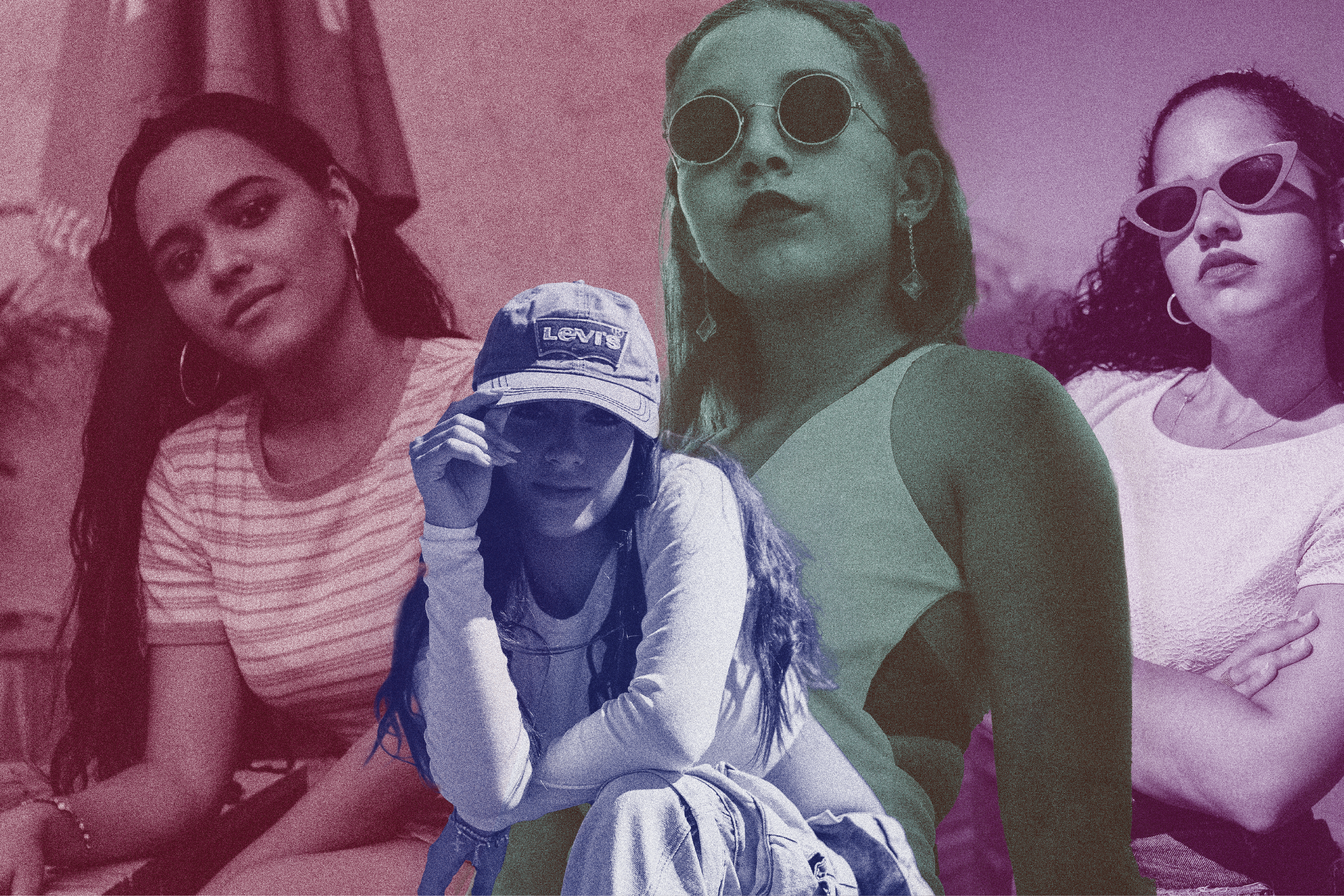Though the lined lips, bandanas and big gold hoop earrings of Latine streetwear style are admired and even appropriated by many people, they also have a history of being deemed “ghetto.” In a similar manner, Indigenous ancestors of Latine culture suffered negative and racialized prescriptions deeming their fashion as primitive and in need of European “modernization”.
Nevertheless, both Indigenous fashion and Latine streetwear (subculture of casual attire) survive today due to indignancy. Thus, modern-day Latine clothing serves as more than an aesthetic, also passing down Indigenous resistance against colonial white fashion standards.
Early Indigenous clothing is rooted in Mesoamerican culture, which includes Mexico and countries in Central America. Toltec (Northern Mexico), Aztec (Northern Mexico) and Mayan (Southern Mexico, Northern Belize and Central Americas) tribes were the blueprint for a staple garment called huipil, a traditional dress worn by townswomen and upper class women. Huipiles were also used as garments for weddings and burial ceremonies as well as priestesses.
Traditional huipiles include intricate embroidery depicting many patterns, most commonly zig-zags to represent mountains and quetzals, the national bird of Guatemala.
Mexicans and Guatemalans still have Indigenous women who weave colorful huipiles to this day despite many years of white-washing and Indigenous erasure. For example, traditional Mayan form-fitting huipiles were replaced by “modest” Victorian muslin huipiles with petticoats, adapting to the dominance of Western trends. In addition, huipiles also transitioned from a full dress to a blouse meant to compliment European skirts during the colonial period, making European garments the staple piece now.
Throughout the 1800’s, the introduction of commercial fabric from colonists made it too expensive for Mayan women to hand-weave their huipiles, so they were forced to wear undecorated huipiles or submit to the trends of European-style blouses, losing not only their traditional weaving skills, but the artisanal quality of their colorful garments.
Despite significant white-washing of the traditional vibrant of huipiles, Indigenous Mayans pressed on and proudly danced in huipiles. Unfortunately, the U.S.-backed Guatemalan Civil War and genocide of more than 200,000 Guatemalans (83% being Indigenous) resulted in a severe loss of huipil presence. Still, small pockets of Indigenous tribes pass down loom-weaving skills to children as a form of resisting Western attempts at erasure of the sacred garment.
In addition to Mesoamerican garments are the bomba skirts of Afro-Latin Puerto Ricans. Imposed by Dutch, French, English and Spanish colonial fashion to enforce social classes, African slaves in Puerto Rico embraced bomba skirts in their traditional dance rituals. Despite their limited access to white (lower class) colored cloth, African slaves turned the skirt into a statement of gorgeous dance garments, resisting white fashion prescriptions Indigenous Andean Ecuadorians also faced colonial oppression through fashion in the 18th century. Despite some Ecuadorians reaching higher socio-economic status and luxury fashion, the Spanish crown imposed laws forcing Ecuadorians to dress according to their racial class, with punitive repercussions in place should they dress “elite,” or white, in this case. Such clothing included ponchos, which many Ecuadorians now wear in red as a sign of blood shed from Spanish colonization.
Not only have Indigenous people maintained their niche fashion, but also a legacy of resistance that remains prevalent in Latine youth in the United States today. From the 1930-70’s, waves of Latin-American immigrants began carrying on sentiments of Western opposition inherited from their Indigenous ancestral culture in their homelands.
Beginning in the 1930’s, Chicano culture in Los Angeles and Texas developed pachuco pants, which were a counterculture to Anglo-American assimilation. Women also began wearing pachucos, a fashion statement against feminine gender roles at the time. Pachuco wear then spawned the baggy jeans of 90’s Chicano fashion, which was also characterized by Cholas (feminine subculture of Chicanos/as).
Chicanos identified themselves as actively “non-Anglo,” as coined by Mexican American civil rights activist Ruben Salazar. By embracing red flannels, bandannas, baggy jeans and tattoos, 90’s Chicanos created an antithesis to the “refined” styles of preppy, yuppie white Americans. Their baggy jeans were associated with an uneducated and gang class that perpetuated stereotypes of all Latines, especially Mexicans, as violent gang members.
Though many Chicanos did use fashion as a way of delineating gang relations, their clothes also made statements against whiteness. Cholas re-defined femininity through their distinct makeup—that is, lined lips, thick eyebrows paired with gold hoop earrings and acrylic nails. They too were associated with Chicano gang culture, wearing flannel and bandanas.
Since the 90’s, Chola and Chicano fashion has been recycled into modern Latine streetwear. On one end of the streetwear spectrum is the “Hot Cheeto girl,” a phrase used to describe Black and Latine women who wear big hoops, buns, long acrylics and false lashes. They are associated with being uneducated, poor, disruptive and angry; in essence, they are “ghetto” or “trashy.” Nevertheless, Hot Cheeto girls make a statement against the normalization of upper class wWhite women as the face of beauty, just like their Chola predecessors.
Many Latine streetwear brands incorporate specific slogans, images, colors and fonts that pay homage to Chicano and Indigenous culture. Examples of recycled Latin-American traditions and themes include shirts with La Virgen de Guadalupe, a religious figure in Latin-American culture, with Chicano “gang” fonts, baggy clothes with alternative/punk twists.
The word chingona has been reclaimed by many Latina street wearers as an empowering fashion statement, as the word is used as a negative prescription of “too aggressive.”. One brand in particular called Chingona Wear maintains resistance to white beauty standards explicitly on their website through Spanish slogans, Chola baggy clothes and merchandise with the word “Chingona” proudly displayed.
For Afro-Latines, bomba dancer and skirt-maker Milteri Concepcion carries on bomba colonial resistance with a modern flair by creating skirts that advocate for the rights of queer Latines and domestically abused Latines. She displays them in various museums and combines historic fashion concepts with progressive social values, demonstrating how Latin-American culture can honor both historical traditions and newer and bolder patterns, dismantling what white colonists originally imposed bomba skirts to be.
Centuries of amorphous changes in Indigenous and Latin-American fashion all remain synonymous in their mission: to never give up resisting the stereotypes, negativity and racial oppression from white culture. Ostracized for wearing “lower-class” clothing, whether imposed or adopted, Indigenous tribes, immigrant communities and Latin-Americans all carried or still carry the Latin pride through the textiles, patterns, words and cloth on their bodies. For Latin-Americans, fashion as resistance truly does withstand the test of time.

















